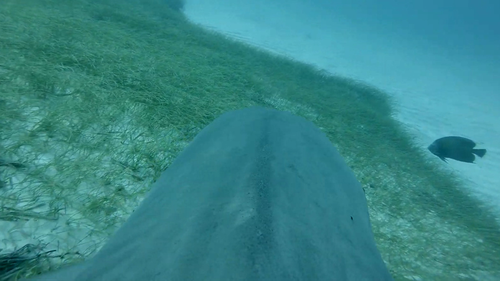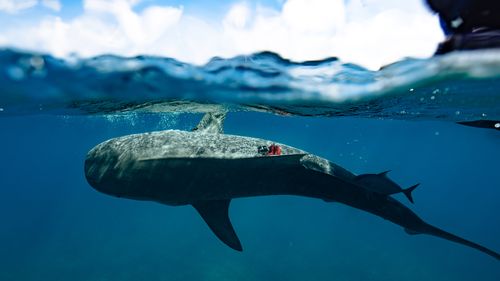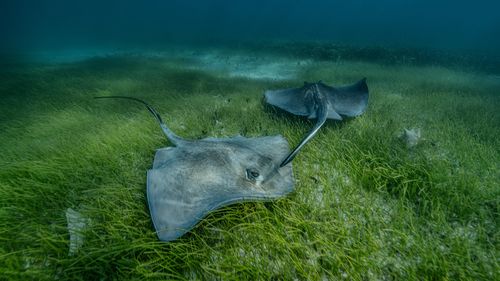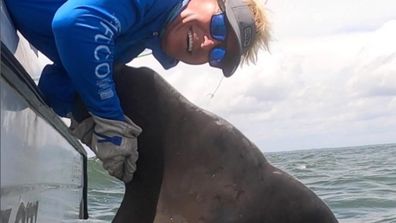The shark makes its way over to potential prey before it turns, continuing its journey through the swaying vegetation.
Researchers mounted revolutionary 360-degree cameras on the apex predators and in “partnership” with the creatures mapped what’s believed to be the world’s largest seagrass system in Bahama Banks.

Dr Oliver Shipley, a senior research scientist with Beneath the Waves, told 9news.com.au the study could change how the ocean is surveyed.
He forecasted that other species could soon be used to map the mysteries of the deep.
“Over the next five to 10 years we will see a real kind of uptake in partnering with animals to uncover their secret lives, and survey and explore parts of the ocean we couldn’t,” Shipley said.
“People are using turtles, they are another great animal … and we are actively working with ocean sunfish, or mola mola, which is another animal we know little about, but moves expansive distances in the ocean.”
The cameras are mounted using biodegradable zip ties that break down, allowing the package to rise to the surface.
“Nothing remains on the animal once the tag comes off,” he said.

Shipley said the ideal animal candidate should spend a lot of time towards the bottom of the ocean.
Read Related Also: Oklahoma man allegedly robs Starbucks after store refuses to issue wife $1.25 refund
This is one of the factors that makes tiger sharks ideal surveyors.
“We ‘partnered’ with the sharks to perform one of the largest and robust seagrass surveys to date.”
The seagrass mapped by the sharks covers 66,000 square kilometres, potentially up to 92,000.
If this assessment proves correct it would make it the biggest seagrass system in the world; larger than the 40,000 square kilometre system off the coast of Queensland, and representing an increase in the global seagrass estimate by up to 41 per cent.


Shipley said ”there’s a couple of important implications” behind the discovery, explaining seagrass helps to mitigate the impacts of climate change.
“If you have a large seagrass system off the coast of a low-lying country like the Bahamas it actually helps buffer some of the storms,” he said.
“They also absorb an awful lot of CO2 (carbon dioxide).
“When we think about trying to find natural solutions to mitigate the effects of climate change, a seagrass ecosystem is about as good as you can get.”










